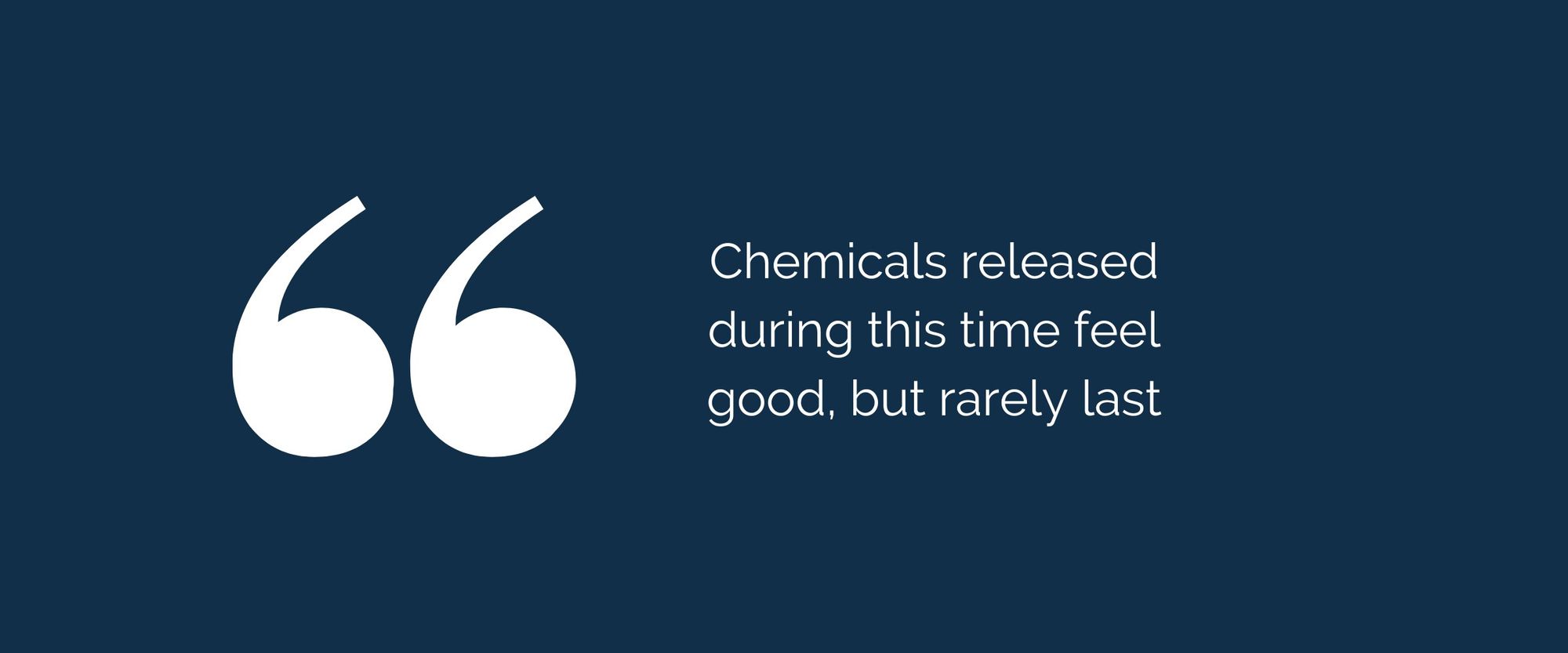They’re patterns of behaviour that can be easy to fall into, but why do we respond in this way, and what can we do to break free from these damaging actions?
When things aren’t going right in our lives, or we’re struggling with the way that we’re feeling, there are many different avenues that we may go down – some conscious, some unconscious, and, occasionally, some that do more harm than good.
You’ve probably heard about ‘self-destructive behaviour’ before, but what does the term actually cover?
“Self-destructive behaviour is behaviour that can have damaging consequences to us, and cause emotional and/or physical harm,” counsellor Danielle Bottone explains. “This type of behaviour often feels as though it provides temporary relief, but ultimately, if it continues, it can have long-term detrimental effects.”
Self-destructive behaviour exists on a scale, and Danielle lists some common examples, including excessive drinking, impulsive behaviour, unsafe sexual practices, substance abuse, gambling, and self-harm.
Why do we engage in self-destructive behaviour?
If this is a question that you have been asking yourself, you’ll likely get the best answers from having a conversation with a counsellor, however, as Danielle explains, there are some common causes, including traumatic experiences, loss and grief, self-destructive behaviours in immediate family, and negative core beliefs.
“Self-destructive behaviour can be a result of experiencing an isolated or repeated distressing event leading to trauma. This level of stress can be detrimental to our emotional functioning, and act as a catalyst for unhealthy habits formed in an attempt to cope,” Danielle continues. “Self-destructive behaviour often feels as though it relieves us from the emotional pain attached to trauma. Chemicals released during this time feel good, but rarely last, hence the behaviours become cyclical and difficult to shift.”
Danielle also explains how these behaviours can stem from core beliefs that we hold about ourselves. She uses the example of experiencing bullying as a child. That bullying might have led us to internalise feelings of rejection, developing a core belief of ‘I am not good enough.’
“If negative core beliefs are left unchallenged, we tend to lean towards choices in our everyday lives that support that belief, in turn perpetuating the cycle and the need to cope,” Danielle says.
“Self-destructive behaviours may feel like they soothe the emotional pain attached to these core beliefs, but often, they assist in masking the pain and avoiding the root cause.
“Lastly, if we were raised in an environment where self-destructive behaviour was commonplace, and healthy conflict resolution was absent, we will inevitably find healthy ways of resolving pain difficult. This does not mean that self-destruction feels good, easy, or pain-free, it is likely quite the opposite. What it does mean, is self-destruction feels familiar. We become experts at knowing how to soothe, avoid, and hide behind destruction. Changing this pattern requires us to challenge that narrative by unpacking the behaviour, and discovering what need it serves.”

How to let go of self-destructive behaviour
By now, it’s clear that this problem is often a complicated and multi-layered one. And so, unfortunately, the solution won’t be simple either. However, there are still steps that you can take to begin addressing self-destructive behaviour if you notice that you have a tendency to experience it…
Increase your understanding
Noticing that you might have a problem with self-destructive behaviour is an excellent first step, and a big part of working towards a form of solution. From here, Danielle recommends asking yourself the following questions to better understand your self-destructive pattern:
- What does the cycle look and feel like?
- Are there specific triggers that sit before the self-destructing behaviours?
- What causes it to occur more or less frequently?
- Are there events that you are aware of that have contributed to this cycle in some way?
“Exploring the answers to some of these questions will allow you to increase the understanding you have of how the cycle works, and what it might be serving,” she says. “It also highlights where opportunities to intervene and disrupt the cycle are present. The aim is to make the cycle of behaviour feel less chaotic and more predictable. When we can predict things, it allows us to plan ahead and influence change.”
Once again, this is something that a professional would be able to support you with, and Danielle highlights how a counsellor would be able to help you explore any emotions that come up, in a safe environment. They may also be able to identify certain trends that might not be immediately obvious to you, and which you might otherwise have missed.
Choose a new alternative
“Changing isn’t easy, but the more we try something new, the easier it gets,” Danielle explains. “With the information gained about the cycle and potential origin, allow yourself to focus on the new choices you want to make that directly challenge your self-destructive behaviour. Keep choosing the alternative option(s), and practise making choices that align with your desired destination.”
What those alternatives might look like will be entirely unique to you and your situation, but, for example, someone who finds social situations overwhelming and anxiety-inducing, and who might then excessively drink alcohol, may instead try to notice when they have been triggered, and see if they can move to a quiet space to take some deep breaths, repeat affirmations, or reach out to a supportive friend.
Welcome support
Speaking of supportive friends, Danielle has a reminder that you don’t have to do it alone. “Acknowledge your support system, and include the people you trust in your healing where appropriate,” she says. “This is not exclusive to friends or family, this could be a local support group with others who have experience of self-destructive behaviours and are embarking on a similar journey to you.”
Online forums are also a great way to connect with people with similar experiences. One example is Side by Side, which is an online community forum hosted by mental health charity Mind. The space is designed to help people make connections, learn from each other, and take steps to support their mental health.
Be self-compassionate
Sometimes, when we’re in the process of making a change, we can neglect to acknowledge what an achievement that is, and to cut ourselves some slack when things don’t go perfectly on the first try.
“You are doing something that takes courage and determination,” Danielle says. “Acknowledging your strengths, challenging your inner critic, being kind, and resisting the temptation to shame or judge, are all crucial to showing up for yourself during this process.”
So, if this is a journey that you’re about to embark on yourself, make sure to give yourself the space to really understand the depth of what you’re about to do. Know that it’s all right to not get things right all the time, to try again another day, and to lean on others when you need to. After all, you can’t break the cycle if you don’t take that first swing.
To find out more, visit the Counselling Directory to find out more or speak to a qualified counsellor.


Comments